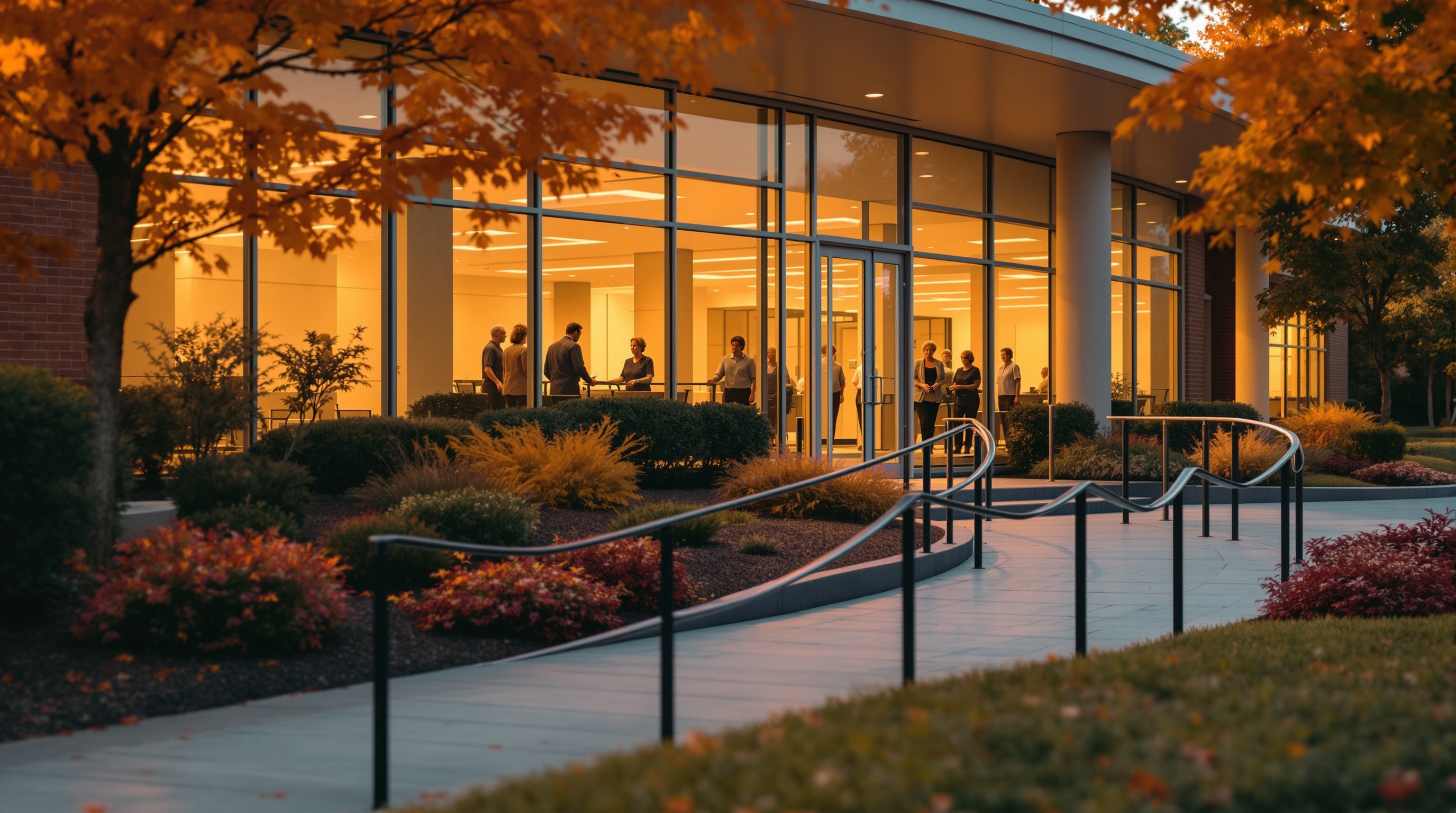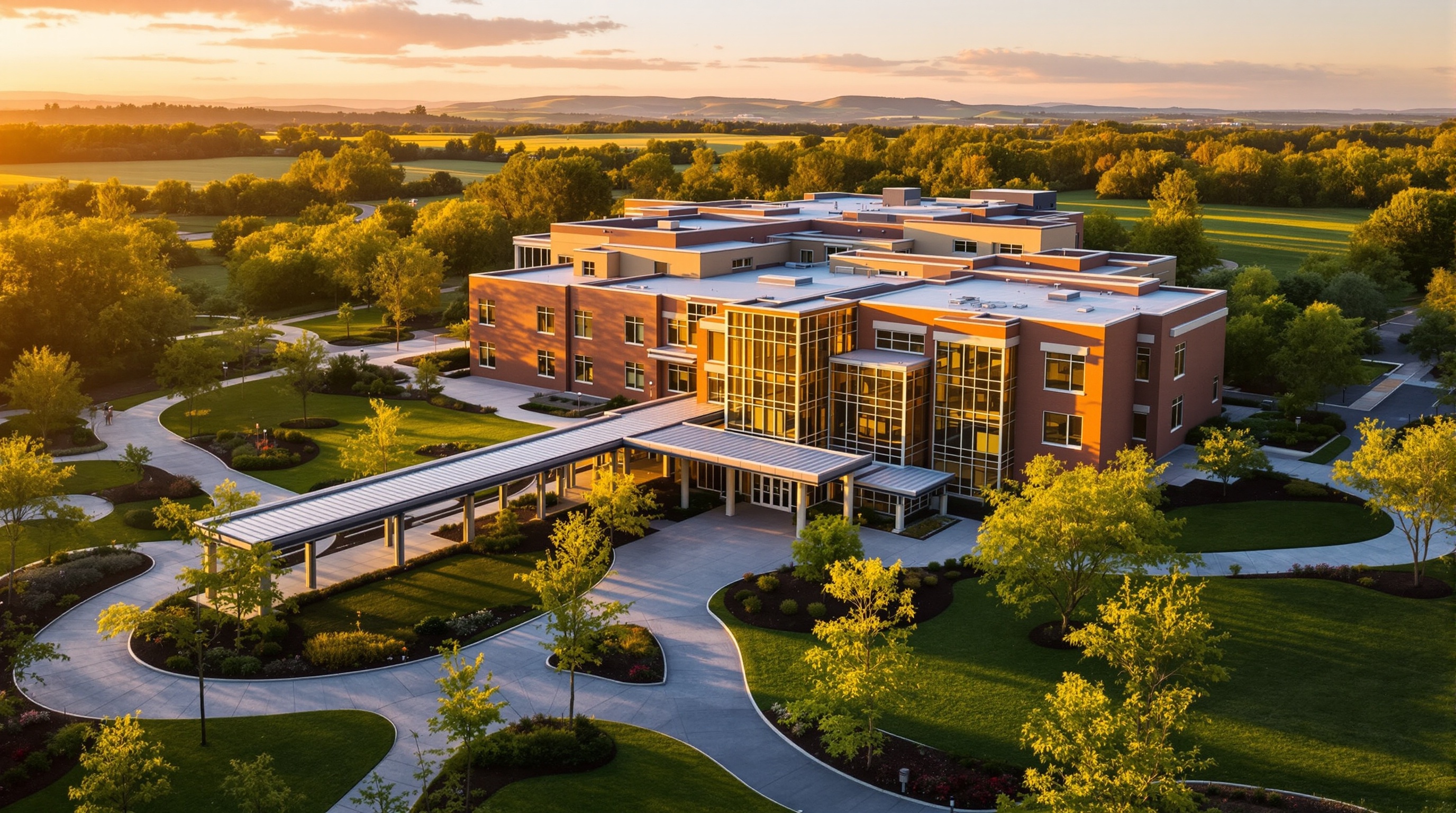2025 Medicare Rate Increase: 4.2% Boost for Skilled Nursing Facilities
Explore the 4.2% Medicare rate increase for skilled nursing facilities in 2025. Learn how this update impacts SNF reimbursement and operational planning.
Quick Navigation
- 1. Introduction
- 2. Current Challenges in 4.2% Medicare Rate Increase 2025
- 3. How Sparkco AI Transforms 4.2% Medicare Rate Increase 2025
- 4. Measurable Benefits and ROI
- 5. Implementation Best Practices
- 6. Real-World Examples
- 7. The Future of 4.2% Medicare Rate Increase 2025
- 8. Conclusion & Call to Action
1. Introduction
The financial landscape for skilled nursing facilities (SNFs) is shifting once again — and this time, there’s a glimmer of good news on the horizon. For fiscal year 2025, the Centers for Medicare & Medicaid Services (CMS) has finalized a 4.2% Medicare rate increase for SNFs, a change that is expected to inject billions of additional dollars into the sector nationwide. As SNFs continue to grapple with inflation, workforce shortages, and growing demand for post-acute care, this rate hike couldn’t come at a more critical moment.
Despite the welcomed increase, the reality remains: many skilled nursing providers are still struggling to balance rising operational costs with the need to deliver high-quality care. The sector has faced persistent challenges, from pandemic-related expenses to ongoing staffing pressures and evolving regulatory requirements. While a 4.2% boost in Medicare reimbursement is significant, industry leaders and administrators are asking: Will it be enough to stabilize facilities and support the frontline caregivers our seniors rely on?
In this article, we’ll break down what the 2025 Medicare rate increase means for skilled nursing facilities, explore the factors driving this policy update, and examine its potential impact on providers, residents, and the broader healthcare ecosystem. Whether you’re an SNF executive, clinician, or industry stakeholder, understanding the implications of this rate adjustment is crucial to navigating the year ahead. Let’s take a closer look at how this change could shape the future of skilled nursing care.
2. Current Challenges in 4.2% Medicare Rate Increase 2025
The Centers for Medicare & Medicaid Services (CMS) recently proposed a 4.2% Medicare rate increase for skilled nursing facilities (SNFs) in fiscal year 2025, which equates to an estimated $1.3 billion boost in Medicare Part A payments (Skilled Nursing News). While this increase is intended to help SNFs manage rising costs and maintain high-quality patient care, many healthcare facilities are experiencing significant challenges that temper the benefits of the rate adjustment. Below are several pain points related to the new Medicare rate increase, supported by recent data and industry insights.
-
Rising Operational Costs Outpacing Rate Increases
Despite the 4.2% rate hike, operational costs for SNFs have risen by more than 8% on average since 2022, driven by inflation, supply chain issues, and soaring energy prices. This means the rate increase is not enough to fully offset expenses, putting financial pressure on facilities. -
Staffing Shortages and Wage Pressures
According to the American Health Care Association (AHCA), 94% of nursing homes report significant staffing shortages. To recruit and retain staff, facilities are raising wages—registered nurse wages increased by 9.4% in 2023 alone—leading to unsustainable payroll costs that outpace reimbursement rates. -
Compliance with New Staffing Mandates
The CMS is introducing stricter minimum staffing requirements in 2025. Facilities must hire additional staff to remain compliant, but the available workforce and the increased wage demands make this extremely challenging, especially for rural and non-profit SNFs (CMS Fact Sheet). -
Administrative and Regulatory Burden
The 4.2% Medicare increase comes with updated reporting requirements, including stricter documentation for quality metrics and patient outcomes. Facilities must invest in new technologies and training to comply, increasing administrative costs and diverting resources from direct patient care. -
Uncertain Medicaid Funding
While Medicare rates are increasing, Medicaid—responsible for the majority of long-term care funding—remains underfunded. KFF reports that Medicaid reimbursement rates lag up to 20% below the actual cost of care, creating a persistent revenue gap for facilities serving dual-eligible patients. -
Impact on Resident Care and Services
These financial and operational pressures force many facilities to consider cutting non-essential services, limiting admissions, or even closing units. According to the AHCA, over 500 nursing homes have closed since 2020, with closures disproportionately affecting rural communities. -
Delayed Technology Investments
With slim margins, many SNFs postpone investments in electronic health records and telehealth, hindering operational efficiency and innovation in patient care delivery.
In summary, while the 4.2% Medicare rate increase for 2025 provides some relief, it does not fully address the multifaceted financial, regulatory, and workforce challenges facing healthcare facilities. The gap between rising costs, compliance mandates, and stagnant Medicaid funding continues to impact both operations and the quality of patient care.
3. How Sparkco AI Transforms 4.2% Medicare Rate Increase 2025
The announced 4.2% Medicare rate increase for 2025 brings both opportunities and challenges for skilled nursing facilities (SNFs). While increased reimbursements can support care improvements, facilities must maximize efficiency, ensure compliance, and accurately capture revenue opportunities. Sparkco AI’s advanced platform delivers powerful solutions that help SNFs thrive under these new regulatory and financial conditions.
-
Automated PDPM Optimization
Sparkco AI uses intelligent algorithms to review resident assessments and clinical notes, ensuring all care needs are accurately captured under the Patient-Driven Payment Model (PDPM). By automating this process, facilities minimize missed reimbursement opportunities and reduce manual errors, helping SNFs fully benefit from the 4.2% rate increase. -
Real-Time Revenue Cycle Monitoring
The platform continuously tracks billing and claims data, instantly flagging discrepancies or missing documentation. This proactive approach reduces claim denials and accelerates revenue collection, ensuring that facilities see the full financial impact of Medicare changes without delay. -
Smart Staffing Recommendations
With AI-driven analytics, Sparkco AI identifies optimal staffing levels based on census, acuity, and reimbursement trends. This helps administrators allocate resources efficiently, balancing quality care with cost control, even as reimbursement structures evolve in 2025. -
Regulatory Compliance Automation
Sparkco AI stays updated with the latest CMS and Medicare guidelines, automatically adjusting documentation workflows and alerts. Facilities benefit from built-in compliance checks, reducing the risk of costly audits or penalties related to the new rate structure. -
Predictive Financial Reporting
The platform provides clear, actionable financial forecasts based on current and projected Medicare rates. SNF leaders can make informed decisions about budgeting, investments, and operational changes to maximize the benefits of increased Medicare funding. -
Seamless Integration With EHR and Billing Systems
Sparkco AI is designed to connect effortlessly with leading electronic health record (EHR), billing, and payroll systems. Data flows securely and automatically, minimizing manual entry and ensuring that all departments work from a single source of accurate information.
Each Sparkco AI capability is built for ease-of-use and rapid deployment. Facilities can leverage automation and AI insights without the need for complex IT projects or specialized training. The platform’s integration features ensure quick onboarding, so organizations can start addressing Medicare rate changes immediately.
By automating critical processes, enhancing revenue cycle visibility, and simplifying compliance, Sparkco AI empowers skilled nursing facilities to turn the 4.2% Medicare rate increase into a genuine opportunity for growth, efficiency, and improved resident care in 2025.
4. Measurable Benefits and ROI
ROI and Measurable Benefits of Automating the 4.2% Medicare Rate Increase for 2025
The Centers for Medicare & Medicaid Services (CMS) announced a 4.2% Medicare rate increase for skilled nursing facilities (SNFs) in 2025, representing an estimated $1.3 billion boost in payments nationwide. While this increase presents significant revenue opportunities, maximizing its impact requires efficient, compliant, and accurate implementation. Automation technology can deliver substantial ROI by streamlining rate updates, reducing manual errors, and enhancing operational efficiency. Below are measurable benefits of automating the Medicare rate increase process.
-
1. Time Savings: Up to 75% Faster Implementation
Automation enables SNFs to apply new rates across all billing systems and resident accounts in hours rather than days. A case study by Becker’s Hospital Review found that automated billing updates can reduce manual rate entry time by up to 75%, freeing staff for higher-value tasks.
-
2. Cost Reduction: 30% Lower Administrative Expenses
By reducing manual data entry and paperwork, facilities can cut administrative costs by at least 30%. According to a RevCycleIntelligence report, healthcare providers save an average of $3.00 per claim with billing automation, which can translate to tens of thousands of dollars annually for mid-sized SNFs.
-
3. Improved Billing Accuracy: 98%+ Error Reduction Rate
Manual updates are prone to mistakes, leading to claim denials and delayed reimbursements. Automation tools boast a 98% or higher accuracy rate in coding and rate adjustments, compared to manual systems that average a 10-15% error rate (HFMA).
-
4. Accelerated Cash Flow: 20% Faster Reimbursement
Automated rate adjustments mean claims are submitted promptly with correct rates, reducing payment cycle times. SNFs report a 20% improvement in accounts receivable turnover after adopting automated billing (Medical Economics).
-
5. Enhanced Compliance and Audit Readiness
Automated logs and digital audit trails ensure every rate change is documented and traceable, reducing compliance risk. CMS audits become less time-consuming, with facilities experiencing a 50% reduction in audit preparation time (CMS Reports).
-
6. Reduced Claim Denials: Up to 40% Fewer Denials
Automation mitigates common billing and coding errors that trigger denials. A 2023 AHA study found organizations using automation experienced up to 40% fewer claim denials.
-
7. Staff Satisfaction and Retention
Reducing repetitive manual entry boosts staff morale and reduces turnover. Facilities report up to a 25% drop in billing department attrition rates after automation adoption (HealthLeaders).
-
8. Scalable Growth: Seamless Future Rate Updates
Once established, automated systems make future CMS rate updates seamless, reducing the incremental cost and time to near zero.
By automating the 4.2% Medicare rate increase for 2025, SNFs can achieve measurable gains in efficiency, compliance, and financial performance—delivering strong ROI and positioning facilities for sustainable growth.
5. Implementation Best Practices
The 4.2% Medicare rate increase in 2025 presents skilled nursing facilities (SNFs) with a valuable opportunity to strengthen financial health and optimize patient care. However, to fully realize these benefits, organizations must implement the change strategically and efficiently. Below are actionable steps and best practices for successful implementation:
-
Review CMS Guidelines Thoroughly
Carefully study the official CMS documentation and any related MLN Connects newsletters about the 2025 rate increase.
Tip: Assign a team member to monitor CMS updates regularly.
Pitfall to avoid: Overlooking minor policy nuances that may affect billing or compliance. -
Update Billing Systems and Software
Ensure that all electronic health records (EHR) and billing platforms are updated to reflect the new rate.
Tip: Schedule software updates during low-volume hours to minimize disruptions.
Pitfall to avoid: Delayed updates resulting in claim denials or underpayments. -
Educate Finance and Clinical Staff
Conduct targeted training sessions for billing, finance, and front-line clinical teams to ensure awareness and understanding.
Tip: Use real-world scenarios in training modules for better retention.
Pitfall to avoid: Assuming staff are aware of changes without formal communication. -
Audit Current Processes and Claims
Perform a pre-implementation audit of existing billing and claims processes to identify gaps.
Tip: Use audit findings to develop targeted action plans.
Pitfall to avoid: Failing to address existing errors that could be exacerbated by new rates. -
Communicate Changes to Stakeholders
Proactively inform all stakeholders—including leadership, payers, and partners—about the rate update and its implications.
Tip: Create clear, concise briefing documents for internal and external use.
Pitfall to avoid: Inconsistent messaging leading to confusion or misaligned expectations. -
Monitor Cash Flow and Revenue Cycle Metrics
Track revenue cycle KPIs closely after implementation to ensure accurate reimbursement.
Tip: Set up alerts for claim denials or payment discrepancies.
Pitfall to avoid: Ignoring early warning signs of process breakdowns. - <










